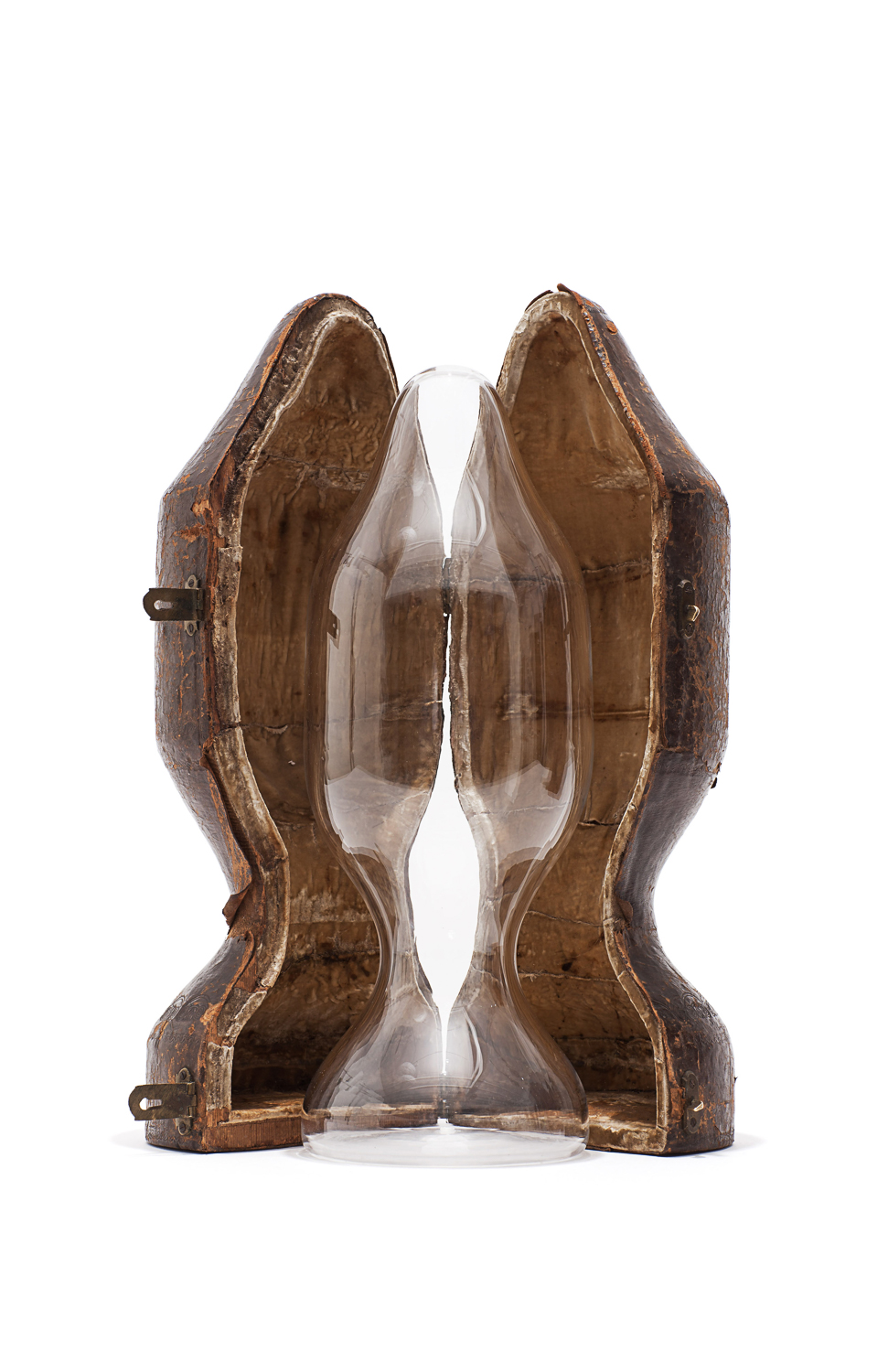遗弃之物
The Castaways
2015
我们如何应对如今物质遗产的流失?流失的文物或物品中又被嵌入了什么样的意义?这些都是本和塞巴斯蒂安正在进行的项目“虚空博物馆”所设的提问。目前,他们正在北京开展调研,目标是对西方价值体系中有关遗失文物或艺术品的模仿、复制和伪造相关历史进程有更深的理解。
项目的重点在于研究在文化层面有着重要意义,但却已经遗失的艺术品或文物,并探讨其意义是否可以通过别的途径传播,如重制质量极高的复制品或再现制作这一独特艺术品的过程。项目的成果包括多件从不同博物馆机构租借的运输容器的复制品。这一系列运输容器有着以下特点:它们为了什么对象而被制作,以及和它们相关的记录都已无从可循。失去原有包含物的运输容器留下了更多可供猜想的空间:观者在面对这一容器时,会带有更多的个体主观思考。
针对每一个运输容器,项目组都以玻璃吹制的方式重新塑造了一个符合容器内部负空间的形体。玻璃本身的材质特点强化了人们对有形与无形、存在与不存在的思考,因此它们更在进一层面唤起了更多在设计领域的相关问题:
– 什么是假的,什么是原创?
– 存在带来了什么,而遗失又代表了什么?
– 什么是新,什么是旧?
– 什么被界定为艺术,什么被归属为设计?
– 理论与实践之间的边界是什么?
– 什么是物质的,什么是非物质的?
How do we deal with absence within present day material cultures? How is meaning embedded in objects and artifacts in conditions of absence? These are questions currently being asked in ben and sebastian’s ongoing project ‘The Museum of Nothing’. Currently, they carry out research in Beijing, with the ambition to develop a deeper understanding of the historical course of Western value systems relating to imitations, replicas and forgeries of lost artworks and artifacts.
The research focuses on culturally significant artworks and artifacts that have been lost, and investigates how their meaning is transmitted by other means, such as through reconstructing replicas of high artistic quality and re-performing the processes of making particular works of art. The results consist of exact copies of transport cases that have been borrowed from different museum institutions. The collection of transport cases share the following characteristics: the objects for which they were made have been lost, as have all records of those contents. The loss of the original content leaves room for conjecture: a space in which the individual subjectivity of viewer comes into play when mentally filling the gap..
In each case a glass form is blown, moulded to exactly fit the negative space occupied by their lost contents. Glass has the capacity to flicker between materiality and immateriality, presence and absence, and therefore the works evokes an array of questions relevant in the field of design:
– What constitutes a Fake and what is an Original?
– What carries Presence and what contains Absence
– What is New and what is Old? – What is defined as Art and what is classified as Design?
– What is the border between Theory and Practice?
– What is Material and what is Immaterial?
设计师简介 About The Designer

Ben Clement / Sebastian de la Cour
Germany/德国
Ben Clement
*1981
Sebastian de la Cour
*1980
www.benandsebastian.com
本和塞巴斯蒂安的工作室所设计的作品似乎在实体设计和无形思维理论的尖上打转。他们在建筑领域接受过训练,并且精通设计理论,就博大精深的哲学和社会学体系而言,他们的作品具有精细的力学结构和错综复杂的细节,想要把他们的作品具体化是不可能的。他们最近在丹麦设计博物馆举办的展览“幽灵的四肢”就明确展现了这种飘忽不定的风格。
他们的作品被哥本哈根医学博物馆、国家博物馆等直接纳为永久藏品,而且和一些令人意想不到的藏品一同出展。他们的作品不仅是展示中的雕塑,更包含了背景与物品、身体和四肢等之间的大量关系。本和塞巴斯蒂安的作品唤起了关于医学意义上幽灵四肢的思考,因为被截肢的人仍能感觉到他们失去肢体的存在。他们对我们所期待、觉察和发自内心感受到的整体性提出了质疑。
引用:
DAMn杂志,第33期
By 独立策展人Cassandra Edlefsen Lasch
‘The work of the collaborative artist practice, ben and sebastian, teeters on a cusp between designed physicality and intangible theories of the mind. Trained in architecture and theoretically versed, their sculptures take on elaborate mechanics and boast intricate detailing, yet speak to vast philosophical and sociological systems. It is impossible to concretely anchor their work, an elusiveness made evident in their recent exhibition at the Design museum Danmark, ‘Phantom Limbs’.’
Embedded directly within the permanent collection and specifically paired with unexpected inventory from Copenhagen’s Medical Museum, National Museum and the attics of Designmuseum Danmark, their work becomes not only the sculptures on display, but the myriad relationships made between context and object, between body and limb. Evoking the medical sense of phantom limbs, where an amputee still feels the presence of the absent limb, ben and sebastian navigate the museum context and call into question the assumed wholeness we expect, perceive and viscerally feel.’
Excerpt from DAMn Magazine, issue 33
by independent curator Cassandra Edlefsen Lasch
